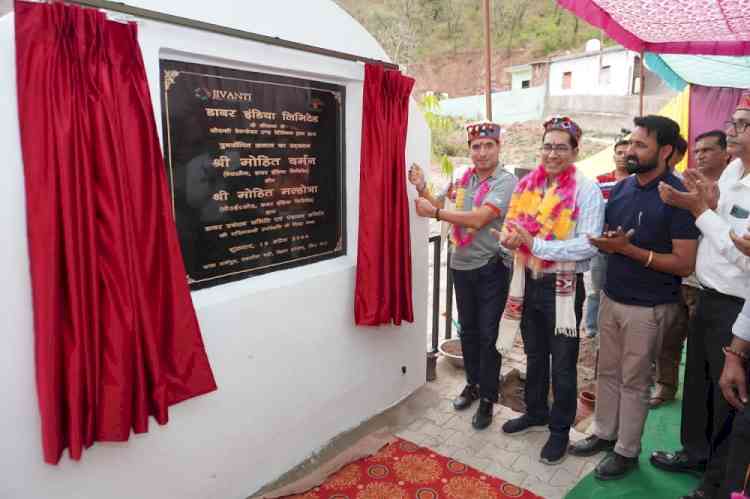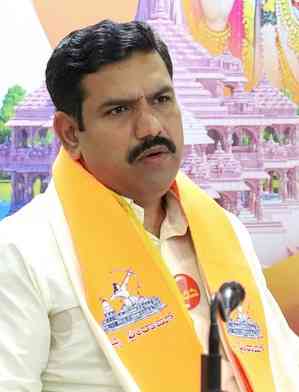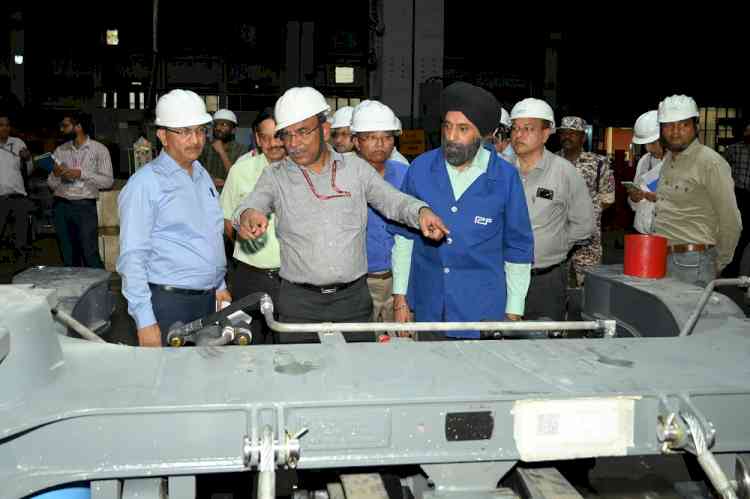Effigy of Ravana neither built nor is it set afire in the periphery of the Baijnath town in Himachal
Author(s): Arvind SharmaDharamshala, September 30, 2017: Baijnath is an ancient pilgrimage town in Kangra district of Himachal, situated on Pathankot –Mandi NH, about 45 kms from Dharamshala The pace is world famous for the 13th century...

Dharamshala, September 30, 2017: Baijnath is an ancient pilgrimage town in Kangra district of Himachal, situated on Pathankot –Mandi NH, about 45 kms from Dharamshala The pace is world famous for the 13th century old Lord Shiva temple.
Baijnath is also famous for another reason- when entire nation celebrates Dussehra (a major Hindu festival celebrated at the end of Sharad Navratri every year, and remembers god Rama's victory over the demon Ravana, by burning towering effigies of Ravana symbolizing the evil is burnt with fireworks marking evil's destruction), the effigy of Ravana neither built nor is it set afire in the periphery of the Baijnath town. Locals believe that Ravana was devotee of Lord Shiva and burning his effigy will invite the wrath of Lord Shiva.
D.K. Sharma, a resident of Baijnath,said, "There is also a myth that anybody from the town who participates in the effigy-burning ceremony will soon die an unnatural death. The fear of death is so strong that residents prefer to stay away from any kind of celebration.” He said that the market in the town remained closed during Dushera Festivcal and people don't even buy crackers and sweets on Dussehra. He added ,”people here are so inspired by Ravana's devotion to Lord Shiva that they do not want to burn Ravana’s effigy.”
It is believed that during the Treta Yug, Ravana in order to have invincible powers worshiped Lord Shiva in the Kailash. In the same process, to please the almighty he offered his ten heads in the havan kund. Influenced by this extra ordinary deed of the Ravana, the Lord Shiva not only restored his heads but also bestowed him with powers of invincibility and immortality.
On attaining this incomparable boon, Ravana also requested Lord Shiva to accompany him to Lanka. Shiva consented to the request of Ravana and converted himself into Shivling. Then Lord Shiva asked him to carry the Shivling and warned him that he should not place the Shivling down on the ground on his way. Ravana started moving south towards Lanka and reached Baijnath where he felt the need to answer the nature’s call. Lord Ganesh had requested Lord wind( Vayu ) to make Raven to do so. On seeing a shepherd, Ravana handed over the Shivling to him and went away to get himself relieved. The Shepherd was actually Lord Ganesh in a form of a Shepherd. Lord Ganesh purposely put the linga on the ground and thus the Shivling got established there and the same is in the form of Ardhnarishwar (God in form of Half Male & Half Female).
Though the Ramlila is held in the town but the locals don't burn the effigy of Ravana and his brothers Kumbhkaran and Meghnath.
Gokul Chand (80) who was brought up in the town, said he has never celebrated Dussehra. The markets in the town, remain closed and people don't even buy fire crackers and sweets on Dussehra. “Since our grandparents did not celebrate Dussehra, we are not celebrating either. Our children and grandchildren also follow the tradition,” he said.
Even the town and its nearby villages do have any goldsmith shop because of the same religious belief.
Originally known as Kiragrama, the village lies on the Pathankot-Mandi highway (National Highway ) almost midway between Kangra and Mandi. The present name Baijnath became popular after the name of the temple. The town is located on the left bank of the river Binwa, a corrupt form of ancient Binduka, a tributary of river Beas. The Baijnath temple has been continuously under worship ever since its construction in 1204 A.D. The two long inscriptions in the porch of the temple indicate that a temple of Shiva existed on the spot even before the present one was constructed. The present temple is a beautiful example of the early medieval north Indian Temple architecture known as Nagara style of temples. It's a protected monument maintained by the Archaeological Survey of India.
Baijnath, located at 4,311 feet, is a small town located amid the scenic Dhauladhar mountain range of the Himalayas.

 cityairnews
cityairnews 
















